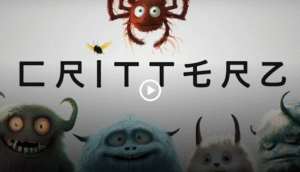Will 2026 Be the Year We Get AI-Generated Movies? It’s a question on the minds of many creators, technologists, and audiences as generative AI tools for video surge in capability.
Thank you for reading this post, don't forget to subscribe!With companies like Runway, OpenAI, and Meta pushing text-to-video models, the film industry is inching closer to synthetic cinema. But does the technology, infrastructure, and economic model align for full-length, AI-generated movies in 2026?
In this article, we unpack the current state of video generation AI, examine prototypes and announced projects, and assess whether Will 2026 Be the Year We Get AI-Generated Movies is realistic or just science-fiction speculation.
Read on:
1. The Current State of Generative AI Video Technology
To understand if Will 2026 Be the Year We Get AI-Generated Movies, we must first look at where the technology stands today.
Runway Gen-4: A Big Leap
Runway released its Gen-4 video model in March 2025. According to the company, it can create consistent scenes, characters, and objects across multiple frames; a big step toward cinematic coherence.
Runway also raised US$308 million to fund its generative media work, signalling serious commitment to synthetic filmmaking.
The Gen-4 model supports text prompts plus reference images, enabling creators to define characters or shots.
This is not simple clip generation Gen-4 aims for “consistent world environments” and dynamic motion, which is essential for feature-length storytelling.
With tools like this, one major technical barrier to full AI-made movies; scene continuity is weakening.
Text-to-Video Models from Luma and Google
-
Luma Labs’ Dream Machine is a text-to-video model that creates realistic short clips with motion, launched in 2024.
-
Google DeepMind’s Veo 3 (released October 2025) can generate video and synced audio from text prompts.
-
Meta has also announced a model called Movie Gen that produces short scenes with video, music, and sound effects.
These models are increasingly capable, but they operate under limitations — particularly around length, consistency, and cost.
OpenAI’s Sora / Sora 2
OpenAI’s Sora is a text-to-video system designed to produce short, vertical clips.
In late 2025, OpenAI announced Sora 2, a more advanced version, and even launched a standalone app with TikTok-style vertical video.
However, training data for Sora remains controversial. Investigations suggest Sora may have been trained on copyrighted video content scraped from platforms like YouTube.
Despite controversies, Sora 2 is a strong indicator that major AI companies believe video generation is a near-term product — not just lab research.
2. Real Projects That Hint at AI-Generated Feature Films
If you’re wondering Will 2026 Be the Year We Get AI-Generated Movies, some recent projects suggest the answer might lean toward “yes but cautiously.”
The Sweet Idleness
One notable film is The Sweet Idleness, which is being marketed as the “world’s first feature-length AI-generated film.” Produced by Andrea Iervolino, its teaser was released in October 2025.
If all goes well, this could premiere in February 2026, making 2026 potentially historic. The film reportedly uses AI actors (“AI agent” directors) and potentially generative visual content exactly the kind of experiment that tests whether Will 2026 Be the Year We Get AI-Generated Movies in earnest.
Critterz

In another example, Critterz is an animated feature primarily generated by AI, with human voice actors. Developed by OpenAI’s Chad Nelson, the project reportedly uses GPT-5 and image-generation tools.
It has a reported $30 million budget and aims for a 2026 theatrical debut. This is perhaps the clearest near-term proof-of-concept that Will 2026 Be the Year We Get AI-Generated Movies at least in the animated space.
3. Technical & Creative Hurdles to Fully AI-Generated Movies
Even as models improve, Will 2026 Be the Year We Get AI-Generated Movies? hinges on overcoming several big challenges.
Coherence & Storytelling
Generative models are good at short, visually compelling clips. But feature films need coherence: consistent characters, narrative arcs, camera logic, pacing.
The survey paper Generative AI for Film Creation shows that while GenAI is rapidly advancing, issues remain with motion continuity, character consistency, and style coherence.
These are non-trivial problems and models must scale up to reliably handle sequences beyond a few seconds.
Cost & Compute
Training and running high-fidelity video models is expensive. The Open-Sora 2.0 paper (published early 2025) shows it’s possible to train a top-tier model for $200k, but that’s just for research-level systems.
For a full-length movie, compute costs could explode, especially if you want high resolution, long duration, and consistent frames.
Intellectual Property & Ethical Risks
OpenAI’s Sora tool raised controversy for potential use of copyrighted training material. Moreover, with films like The Sweet Idleness, there are questions about how “AI actors” are credited, paid, or regulated.
And then there’s the moral dimension: Who owns an AI-generated movie? The user? The model? The company?
Artistic Depth & Emotional Nuance
Ben Affleck summed up a common concern: AI might handle technical tasks, but creating deep, emotionally rich storytelling is harder. Many in Hollywood argue AI lacks human creativity or at least the kind of lived experience, intuition, and emotional intelligence that great cinema demands.
4. Why 2026 Could Still Be a Breakout Year
Despite the challenges, there are strong reasons to believe 2026 could be the watershed year when AI-generated movies become real.
Major Funding & Developer Momentum
Runway’s $308M funding round (2025) shows serious investment in generative video. OpenAI pushing Sora 2 with a standalone app also signals commercial readiness.
Research & Open Models
Advances like Open-Sora 2.0 (commercial-level video generator) and Runway Gen-4 mean that tools are maturing fast. Researchers are publishing model architectures that support more continuity, world-building, and generative control.
Creative Experimentation
We already have Sweet Idleness and Critterz targeting 2026. These prove that some creators believe AI-generated movies are not only possible — but potentially marketable.
Regulatory & Industry Support
The Academy of Motion Picture Arts and Sciences (Oscars) updated its rules to allow films made with AI to compete though with caveats about human involvement. That’s a major signal that AI-made films may soon be accepted in mainstream cinema.
5. Scenarios for 2026: How AI-Generated Movies Might Play Out
Let’s consider a few possible versions of Will 2026 Be the Year We Get AI-Generated Movies:
| Scenario | Description | Likelihood |
|---|---|---|
| Limited Breakout | Small features, mini-films, animated pieces (e.g. Critterz) | High: Given current pilots |
| Hybrid Films | Human-actor + AI-generated background or scenes | Moderate: Easier technically, likely first |
| Full AI Feature | Entire film generated by AI — cast, visuals, story | Low to Moderate: Still many technical, cost, and legal barriers |
The most realistic path for 2026 is a mix: hybrid films and animated AI features, not blockbuster live-action movies made purely by AI.
6. Implications: Why It Matters If 2026 Is the Year
If 2026 is indeed when AI-generated movies emerge, several things could shift dramatically:
Democratisation of Filmmaking
Lower-budget creators could make “movies” without studios. This could decentralise content production and bring new voices in.
Economic Disruption
Traditional production costs (actors, sets, VFX) might fall. But new roles could crop up: prompt writers, AI-directors, training-data curators.
Copyright & Ownership Battles
Who owns an AI-generated film? The user, the company, or the model? These questions will become urgent.
Cultural Shift
AI films could reshape what “cinema” means — blending dreamlike visuals, hyper-stylised scenes, and non-human protagonists.
Artistic Ethics
We will debate authenticity: are AI-generated films art? Or clever simulations? The industry needs frameworks for credit, compensation, and ethics.
7. Risks That Could Delay or Derail AI Movies in 2026
Even with momentum, Will 2026 Be the Year We Get AI-Generated Movies could be delayed by:
-
Legal battles over training data and copyright.
-
Technical roadblocks: scaling up coherence, motion, and narrative.
-
Ethical concerns: deepfakes, misuse, identity and consent rights.
-
Market resistance: studios, creators, and audiences may push back.
-
Cost issues: even generative models may not yet achieve cost parity with conventional VFX.
8. What Creators Can Do Now If They’re Excited About AI Films
-
Experiment with GenAI video tools: Runway Gen-4, Sora, Dream Machine, Veo 3
-
Learn prompt engineering for video: efficient prompts make a big difference
-
Build short pilots: develop 5- or 10-minute AI-generated shorts first
-
Collaborate: partner with AI-native artists, coders, and filmmakers
-
Stay ethical: be transparent about AI use — that will matter for future audiences and awardsSee also:
-
The Rise of Autonomous AI Agents: The New Era After Chatbots
9. Final Assessment: Will 2026 Be the Year We Get AI-Generated Movies?
Putting it all together, here’s what I think:
-
The progress in 2025 across Runway, OpenAI, Luma, and Google strongly supports a breakout in 2026.
-
But not all “movies” will be fully AI-generated — the first wave is likely to be hybrids or animated projects.
-
Yes, 2026 could very plausibly be the year we see the first commercially visible, AI-generated feature — though likely not a big-budget live-action blockbuster.
So, in short: Will 2026 Be the Year We Get AI-Generated Movies? — very likely for indie and experimental films, but not yet for traditional cinema.
FAQs: Will 2026 Be the Year We Get AI-Generated Movies?
Q1: Can AI really produce full-length films by 2026?
Possibly, but more likely hybrid or animated films. Current models (Runway Gen-4, Sora 2, Veo 3) still face challenges in narrative coherence, character consistency, and cost.
Q2: Are there any AI movies already in production?
Yes, Critterz, a mostly AI-generated animated movie, is targeting a 2026 release.
Also, The Sweet Idleness is being pitched as a feature-length AI film.
Q3: Is it legal to make an AI-generated movie?
Yes, the Academy (Oscars) has updated its rules to allow AI-assisted films to compete, but human involvement remains a point of evaluation. The Times
However, copyright concerns around training data (e.g. Sora) are active areas of debate. The Washington Post
Q4: Will AI replace human filmmakers?
Not entirely. Many experts (including actors like Ben Affleck) believe AI is a tool, not a replacement, especially for emotional storytelling. EW.com
Q5: How can I get started with AI-generated video as a creator?
Start with accessible tools like Runway Gen-4 (API), Sora 2 (OpenAI), or Luma Dream Machine. Explore prompt engineering, collaborative storytelling, and pilot projects to test feasibility.
Stay Connected
At Naysblog, we stay on the bleeding edge of tech, AI, and creative trends and we believe 2026 might be the turning point for AI in film.
If you’re a creator or brand wanting to experiment with AI video, talk to GWC Tech. We build generative pipelines, prototype AI-native storytelling, and help you produce forward-thinking media.
- Visit Naysblog.com for analysis, interviews, and trend reports.
- Partner with GWC Tech to prototype your first AI-generated short or film.
Conclusion: Will 2026 Be the Year We Get AI-Generated Movies?
Will 2026 Be the Year We Get AI-Generated Movies? The answer is a cautious yes. We’re likely to see hybrid, animated, or indie AI-generated films, propelled by powerful models like Runway Gen-4, Sora 2, and Veo 3. But technical, legal, and artistic challenges remain so don’t expect fully human-free blockbusters just yet. Still, the era of AI cinema is arriving, and 2026 could be its opening act.


